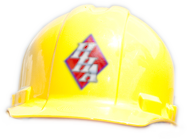Deciding what kind of heat pump is best for your home is the first step in this important element of an ENERGY STAR Home Upgrade. Here are a few additional things to consider before you purchase to help you get the most efficiency and savings out of your new system.
Proper Sizing
Installing properly sized HVAC equipment for your home is essential to getting the best performance and comfort. Bigger is not always better when buying new heating and cooling equipment. A conventional system that's too large may not keep your home comfortable because of frequent on/off cycling, causing humidity control problems and inefficient operation. Solutions involve proper system sizing and component matching for standard efficiency systems. Higher efficiency systems with variable capacity operation can automatically adjust system operation for optimal comfort and efficiency. Ask your HVAC contractor about high efficiency system options and ensure they use the latest design and installation standards (ACCA Manuals J & S, and Standard 5).
Make sure your contractor verifies the proper size system for your home using a tool called "Manual J" – a calculation of the amount of heating and cooling your home requires to keep you warm in the winter and cool in the summer. Higher efficiency equipment with variable speed compressors does a better job of compensating for any over-sizing.
Cold Climate Considerations
A cold climate heat pump is specifically designed to operate at low outdoor air temperatures, as they use advanced compressors and refrigerants that allow for improved low temperature performance. Sometimes called “extended capacity,” these units are intended to supply enough heat for your home without a furnace or other fossil fuel heating source.
Currently, ductless cold climate heat pumps are more widely available than ducted models. Soon, ENERGY STAR certified cold climate heat pumps will excel at providing space heating even in the coldest of climates. If you live in climate zone where winter temperatures regularly dip below freezing, ask your contractor to help you choose an ENERGY STAR certified unit that is best suited to your home.
Dual Fuel
If you have a relatively new furnace with an older central AC, or if you are planning to add a new central AC to the furnace, consider an ENERGY STAR certified heat pump. This creates a dual-fuel system for a modest extra cost over an AC system. Dual fuel systems allow for the flexibility of heating with a heat pump or with a more traditional gas or oil furnace and enables you to use each system optimally based on costs and environmental benefits.









